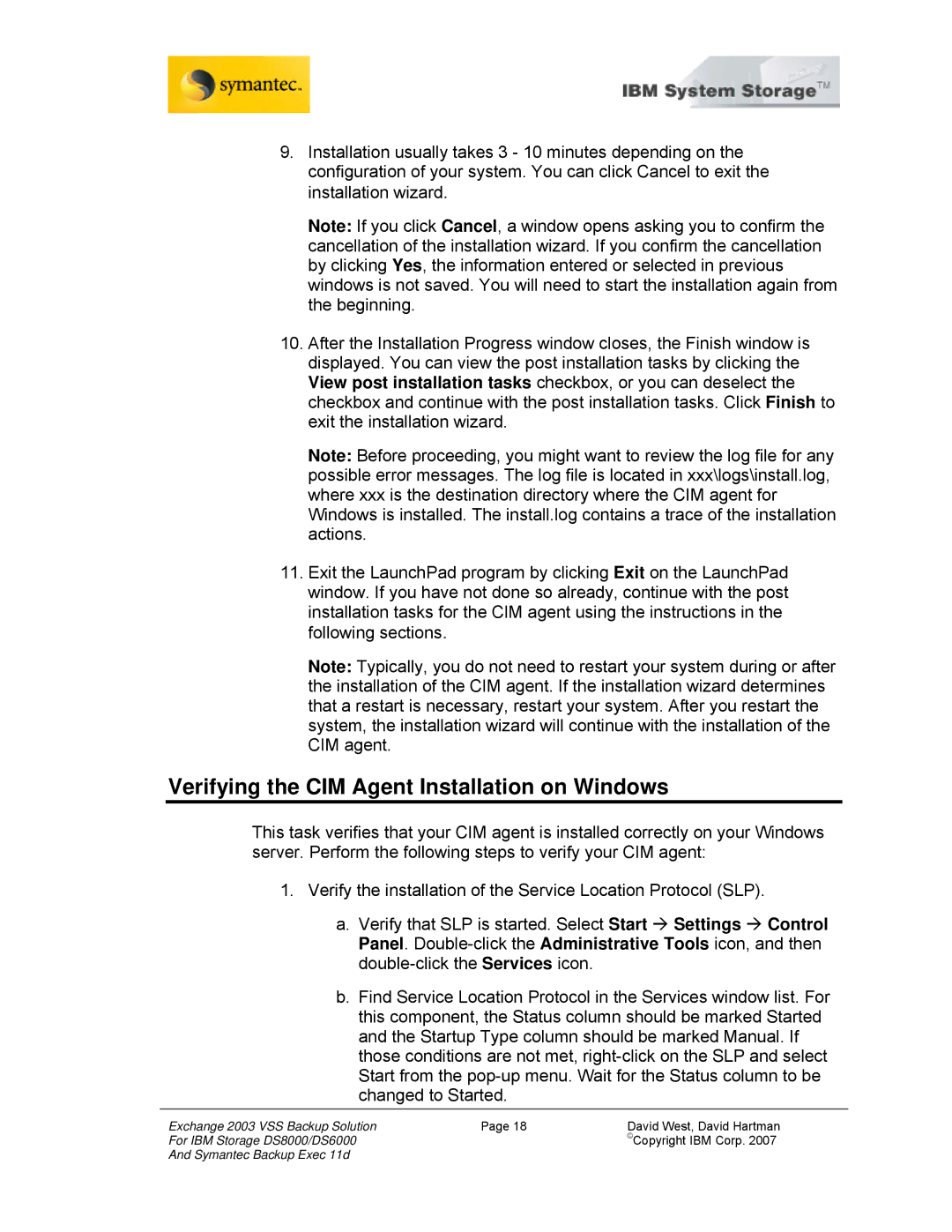
9.Installation usually takes 3 - 10 minutes depending on the configuration of your system. You can click Cancel to exit the installation wizard.
Note: If you click Cancel, a window opens asking you to confirm the cancellation of the installation wizard. If you confirm the cancellation by clicking Yes, the information entered or selected in previous windows is not saved. You will need to start the installation again from the beginning.
10.After the Installation Progress window closes, the Finish window is displayed. You can view the post installation tasks by clicking the View post installation tasks checkbox, or you can deselect the checkbox and continue with the post installation tasks. Click Finish to exit the installation wizard.
Note: Before proceeding, you might want to review the log file for any possible error messages. The log file is located in xxx\logs\install.log, where xxx is the destination directory where the CIM agent for Windows is installed. The install.log contains a trace of the installation actions.
11.Exit the LaunchPad program by clicking Exit on the LaunchPad window. If you have not done so already, continue with the post installation tasks for the CIM agent using the instructions in the following sections.
Note: Typically, you do not need to restart your system during or after the installation of the CIM agent. If the installation wizard determines that a restart is necessary, restart your system. After you restart the system, the installation wizard will continue with the installation of the CIM agent.
Verifying the CIM Agent Installation on Windows
This task verifies that your CIM agent is installed correctly on your Windows server. Perform the following steps to verify your CIM agent:
1.Verify the installation of the Service Location Protocol (SLP).
a.Verify that SLP is started. Select Start Æ Settings Æ Control Panel.
b.Find Service Location Protocol in the Services window list. For this component, the Status column should be marked Started and the Startup Type column should be marked Manual. If those conditions are not met,
Exchange 2003 VSS Backup Solution | Page 18 | David West, David Hartman |
For IBM Storage DS8000/DS6000 |
| ©Copyright IBM Corp. 2007 |
And Symantec Backup Exec 11d |
|
|
